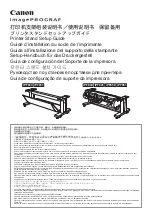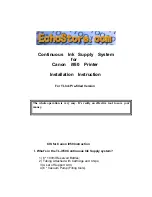
© Galvin Engineering Pty Ltd
Product Installation Guidelines
Version 1, 19 October 2022, Page
10
of
25
Shut Down Test
Once the correct outlet temperature has been achieved, the valves internal mechanism should be exercised at
least 3 times by alternately shutting off the hot and cold supplies while the mixer is set in the full hot position.
Shut Down Test 1
With the mixer still on and with both supplies turned on, allow the mixed water temperature to stabilise for at
least 15 seconds and note the outlet temperature. While holding a digital thermometer in the outlet flow, quickly
isolate the cold water supply to the valve
The outlet flow should quickly reduce to be less than 0.1L/min following the isolation. Recording of the
temperature should continue after isolation and should not exceed the maximum temperature set out in the
applicable standard or code of practice for each state.
Restore the cold-water supply to the valve. After the mixed water temperature has stabilised note the outlet
temperature ensuring the outlet temperature has re-established. The time taken to stabilise the temperature
should not exceed the maximum time set out in the applicable standard or code of practice for each state.
Shut Down Test 2
With the mixer still on and with both supplies turned on allow the flow to stabilise for at least 15 seconds and
record the temperature. Quickly isolate the hot water supply to the valve.
The outlet flow should quickly reduce to be less than 0.4L/min following the isolation. The volume of mixed water
discharged for a period of between 5-35 seconds should be measured and should not exceed the maximum
volume set out in the applicable standard or code of practice for each state.
Restore the hot water supply to the valve and measure and record the outlet temperature after the mixed water
temperature has stabilised. The time taken to stabilise the temperature should not exceed the maximum time
set out in the applicable standard or code of practice for each state.
Ensure that all details of the Commissioning Report are completed, and a copy is kept with the installer and
owner of the premises.
The valve is now commissioned, and it can be used within the technical limits of operation.
NOTE: In some installations, certain types of tapware devices such as flick mixers and solenoid valves
are used. The water pressure may be seen to spike outside that recommended for the valve, during rapid
shut off conditions with these types of devices. Even if the spike only lasts a split second it is still
considered to be outside the operating conditions and may cause the valve to operate incorrectly. In the
event that this does occur, measures must be taken to control the spike, such as the installation of an
inline pressure reducing valve directly before the valve inlets.
To ensure that the mixing valve operates correctly, it is necessary that the pipe-work is thoroughly flushed with
clean water before the valve is installed. This will remove any physical contaminants from the pipe-work,
ensuring trouble-free operation. During the flushing procedure, care should be taken to prevent water damage
occurring to the surrounding area.











































